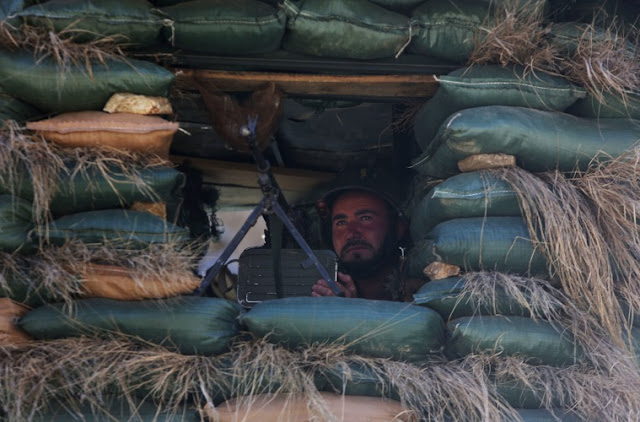Over Half the $76 Billion Military Aid Sent to Afghanistan Since 2002 Stolen
 In what's becoming a recurrent staple of US overseas adventurism, over half the US$76 billion worth of US military aid sent to Afghan security forces since 2002 has been "looted and embezzled," according to a former intelligence officer, due to "brazen corruption” that has seen money and weapons siphoned to private militias.
In what's becoming a recurrent staple of US overseas adventurism, over half the US$76 billion worth of US military aid sent to Afghan security forces since 2002 has been "looted and embezzled," according to a former intelligence officer, due to "brazen corruption” that has seen money and weapons siphoned to private militias.
Kabul Khan Tadbeer, a former Afghan intelligence official and a security analyst, said internal forces that seized power after the ostensible fall of the Taliban in 2001 armed private militias and even embezzled numerous small arms and ammunition for profit.
He called for greater efforts in Washington and Kabul to uncover corruption, and suggested there should be a halt on further aid until the missing equipment was accounted for.
While US$76 billion in military aid was "enough" to last Afghanistan for 40 years without any corruption, he said, not even half of it was left as of August 2017.
 In 2005, the Afghanistan Security Forces Fund was created, and around US$66 billion has been allocated since then. The bulk of funds — over US$26 billion — was spent on "sustainment" such as salaries, ammunition, equipment maintenance, information technology and clothing, with around US$18 billion going on transport, infrastructure projects, operations and training.
In 2005, the Afghanistan Security Forces Fund was created, and around US$66 billion has been allocated since then. The bulk of funds — over US$26 billion — was spent on "sustainment" such as salaries, ammunition, equipment maintenance, information technology and clothing, with around US$18 billion going on transport, infrastructure projects, operations and training.
Among the hardware provided were 600,000 small arms such as handguns and rifles, 163,000 radios, 76,000 vehicles (including 22,000 Humvees), and 30,000 pieces of bomb disposal equipment.
Around 16,000 intelligence and surveillance items, such as unmanned surveillance drones, and 208 aircraft, including 110 helicopters, were also part of the haul.
 Despite this trove, the US is still yet to achieve its primary objective of enabling the Afghan security forces to operate independently, an aim that has been pursued almost ever since the 2001 invasion of the country.
Despite this trove, the US is still yet to achieve its primary objective of enabling the Afghan security forces to operate independently, an aim that has been pursued almost ever since the 2001 invasion of the country.
Small arms are said easily stolen and sold on Afghanistan's black market. Sometimes, the weaponry ends up in the hands of militants fighting security forces. Small arms such as pistols often end up in the hands of criminal elements — both organized and amateur as well.
Rampant corruption among Afghan security forces has led President Ashraf Ghani to establish the Justice and Judicial Center for Anti-Corruption, and the National Procurement Council to oversee major public sector contracts.
Such corruption fighting efforts have seen a former police chief in the southern province of Helmand jailed for three years for selling police district chief posts and appointing "ghost" officers in order to pocket their salaries.
It's not merely Afghanistan where vast volumes of US-made weapons have flowed since the 9/11 attacks. Under the auspices of the War on Terror, the US doled out almost unquantifiable amounts of weaponry and equipment to local battlefield partners in countries across the Middle East and Africa, and in 2017 has only a vague at best idea of where these weapons have ended up.
In Iraq, and other countries, the almost unending abundance of such weapons on the black market has made post-intervention reconstruction even more difficult, empowering militias and criminal gangs and enfeebling the power of authorities. A 2016 Action on Armed Violence report that pooled 14 years' worth of Pentagon contract information related to rifles, pistols, machine guns, associated attachments and ammunition — both for American troops and partners and proxies — found the Pentagon provided at least 1.45 million firearms to various security forces in Afghanistan and Iraq, including more than 978,000 assault rifles, 266,000 pistols and almost 112,000 machine guns.
Much of this epic arsenal was given no questions asked to local armies and militias that subsequent reports have often demonstrated to be plagued with corruption, poor or non-existent training, desertion and human rights abuses.
As a result, it is perhaps unsurprising so many weapons have flown from their hands and into the care of unsavory, dangerous regional elements.




Comments
Post a Comment